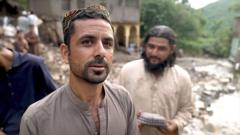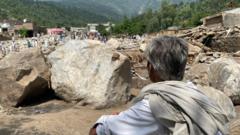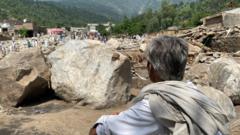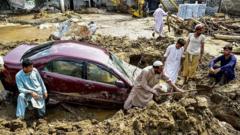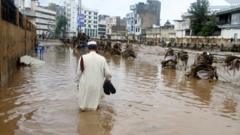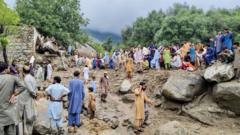In late April, amidst sweltering temperatures of 113 degrees Fahrenheit (45 degrees Celsius), thousands of Hindu devotees embarked on a transformative 200-mile pilgrimage to the Hinglaj Devi temple, nestled in the rugged landscape of Balochistan Province, Pakistan. This journey, characterized by physical endurance and spiritual devotion, continues to play a vital role in the lives of the Hindu minority in this predominantly Muslim country.
Amar Faqira, a father deeply grateful for his son's recovery from a dire health issue, pledged to undertake this arduous trek if his child's health was restored. Once he observed his son regaining strength, Mr. Faqira gathered his companions and set off from Karachi, armed with a ceremonial flag and a heart full of gratitude. "Why shouldn't I fulfill my vow and endure a little pain for her joy?" he remarked, embodying the commitment many have to their faith.
The pilgrimage commenced on the Makran Coastal Highway, where countless pilgrims, clad in saffron head coverings, trudged through sun-baked deserts, chanting joyful incantations to the Mother Goddess. While primarily men participated, the diverse crowd also included women and children, showcasing the communal nature of this sacred journey. Many carried idols, adding to the deep-rooted cultural and religious significance of their march.
Despite the oppressive heat and the harsh terrain, the pilgrims displayed a fierce resilience, demonstrating the intertwining of spiritual commitment with cultural preservation. Each footstep was not merely a physical act but an emblem of faith and community that transcends the boundaries of religion, particularly in a country where religious minorities often face significant challenges. The annual pilgrimage serves not only as a devotional act but also as a means to reclaim and celebrate Hindu identity in a landscape marked by religious diversity and, at times, tension.






